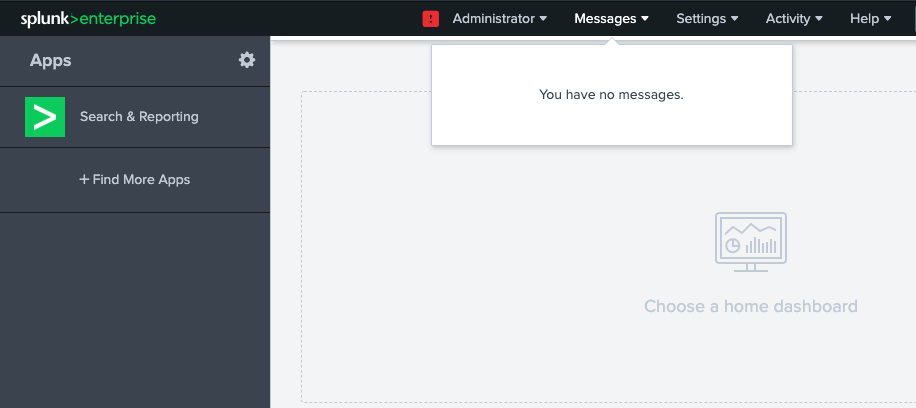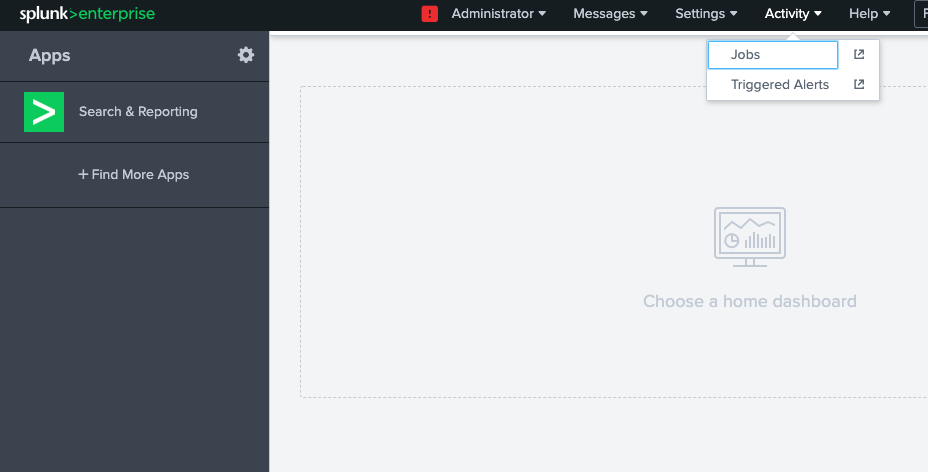Splunk Interface: Splunk Tutorial
In this tutorial, we are going to learn about the Splunk Interface and discuss each option in detail.
What is Splunk Interface
Splunk interface is the first window that you will experience after you login as a user. You will see all the main links links search, report etc. You can also go to the in-built apps in Splunk. The below is the dashboard system that you will see:

Administrator
The Administer dropdown button will feature a health status of the interface and will provide to give options to set the account settings, preferences and logout option, these options further enables the user to select multiple items like setting the username and password etc.

Messages
The messages dropdown shows the inbox messages that you have received in your Splunk interface.

Settings
This area shows the complete options available in Splunk. You can search files through knowledge management, manage server controls and server settings under system.

Activity
This area shows information about the jobs assigned as roles in Splunk dashboard system, furthermore, it also shows the triggered events.

Help
This section is the most important section of Splunk as it helps new beginners to understand Splunk software in more depth. The ‘What’s New’ link shows us the latest improvements in the current version of Splunk. The ‘Tutorials’ link has all the A-Z tutorials related to the current version that you are using, let’s say if you are stuck somewhere then this section will help you to get enlightened. Next, the ‘Splunk Answers’ belongs to the queries and questions posted by the community of Splunk.
The Help section also includes the privacy policy link which explains that what will Splunk do with the data you provide, this includes personal data too. For every user, you wants to use Splunk as a tool professionally must read these terms carefully to begin using it.

Summary
These are the main links that are present on the Splunk dashboard that are ‘go to‘ links to get familiar with and start using Splunk.



